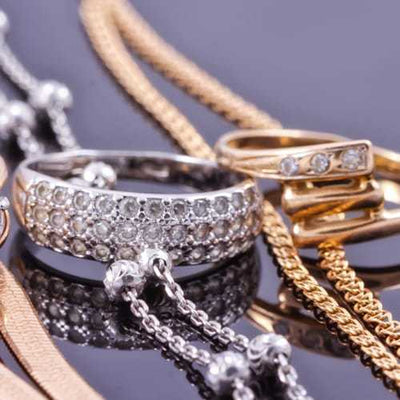Noe's Guide To Gemstones

Just like diamonds, gemstones are judged on their color, cut, clarity and carat. However, since every gemstone is different, grading gemstones is a complex process. At Noe’s, we hope to empower you on your shopping journey by giving you all the information you need to select the gemstone jewelry of your dreams. Here’s a brief guide to give you an idea of what to look for in a quality gem.
Gemstone Color
There is a whole rainbow of gemstones out there. Each gemstone has its own range of colors, and different shades which are considered ideal. Typically, though, the deeper and more vibrant a colored gem is, the more desirable and valuable it is. To get more specific, color grading can be broken down into three key concepts:
Tone: The lightness or darkness of the gem.
Hue: The visible color of the gem.
Saturation: The intensity or vibrance of the gem’s color (hue).
Gemstone Cut
There are a few standard ways to cut gemstones, and it usually depends on the opacity of the gem. Transparent and translucent gems like emeralds, sapphires, rubies and garnets are typically faceted, much like diamonds. Opaque gems like opal and jade are usually cut into cabochons, with a flat bottom and polished, domed top. Unlike diamonds, gemstones are cut to emphasize their color more so than their sparkle.

Gemstone Clarity
Gemstones form within the earth, which means they often develop internal or external flaws. Internal flaws, called inclusions, are things such as air bubbles, cloudy spots or trapped bits of other minerals. External flaws, called blemishes, include chips and abrasions. If they are large enough, these inclusions and blemishes can impact the clarity of the gem.
Clarity is not a concern with opaque gemstones like onyx or turquoise, but it can have a big impact on the value and appearance of aquamarine, amethyst, rubies and other transparent gems.
Gemstone Shape
If you’ve ever been to a fine jewelry store like ours, you’ve seen how many different shapes a gemstone can take! Expert gem cutters can shape a gem into classic shapes like round, oval and square or unconventional shapes like hearts and kites. Other common gemstone shapes include the trillion, a triangle-like cut, and the briolette, which looks a bit like a teardrop.
Gemstone Enhancement
Mother Nature doesn’t turn out perfectly polished gems. Oftentimes, gem cutters use techniques beyond cutting and polishing to improve the natural appearance of colored stones. These are called gemstone enhancements. Some common enhancements include:
Filling: Fissures, cavities or cracks along the gem’s surface can be filled in with borax, colorless glass, plastic or other similar substances to improve the gem’s durability.
Heating: Temperature can have a big effect on gemstones. Heating gems to certain temperatures can cause natural reactions that boost the gemstone’s color.
Coating: All or part of a gem’s surface can be coated with lacquer, ink, enamel, foil or film to enhance its color, add other optical effects and improve its overall appearance.
Lasering: Precision lasers can reach deep into a gemstone to diminish the appearance of inclusions.
Oiling or Waxing: Colorless paraffin, wax and/or oil can be applied to a gem to improve its polished look.

Gemstone Lore
Every colorful gemstone has its own unique history and symbolism. Many people attach spiritual meaning to gemstones. Whether you believe that gems have special properties or not, it’s undeniably fun and fascinating to learn about each gem’s background. Here’s a bit of information on some of the most beloved and popular gemstones.
Amethyst: For cultures around the world, amethyst symbolized peace. Some people believe it can bring serenity and stress relief to the wearer’s life.
Aquamarine: Aquamarine was once carried by sailors who thought it could help calm stormy seas. Nowadays, some believe it calms the metaphorical seas by promoting emotional balance.
Emerald: May’s birthstone, the emerald is associated with natural beauty, abundance and rejuvenation thanks to its deep, spring-green color
Garnet: Garnet is named after the French word gernete, meaning ‘seed,’ because of its resemblance to a pomegranate seed. It is associated with passion, strength and good health.
Pearl: Shimmering pearls are thought to symbolize purity and innocence. For this reason, they’re a common first jewelry gift for young jewelry enthusiasts. They’re also a classic choice for bridal jewelry.
Opal: Because opals glitter in all the colors of the rainbow, some say that opal possesses the properties of every gemstone combined. Most commonly, though, they are associated with hope, transformation and truth.
Ruby: People in Greece, Rome and other early civilizations thought these stones resembled the ‘lifeblood,’ and ruby was considered a stone of health and protection. Warriors even brought rubies into battle as stones of protection.
Sapphire: Sapphires are strongly linked to wisdom and foresight. They were commonly used by ancient kings and queens, who hoped it would inspire them to make wise decisions for their kingdoms.




